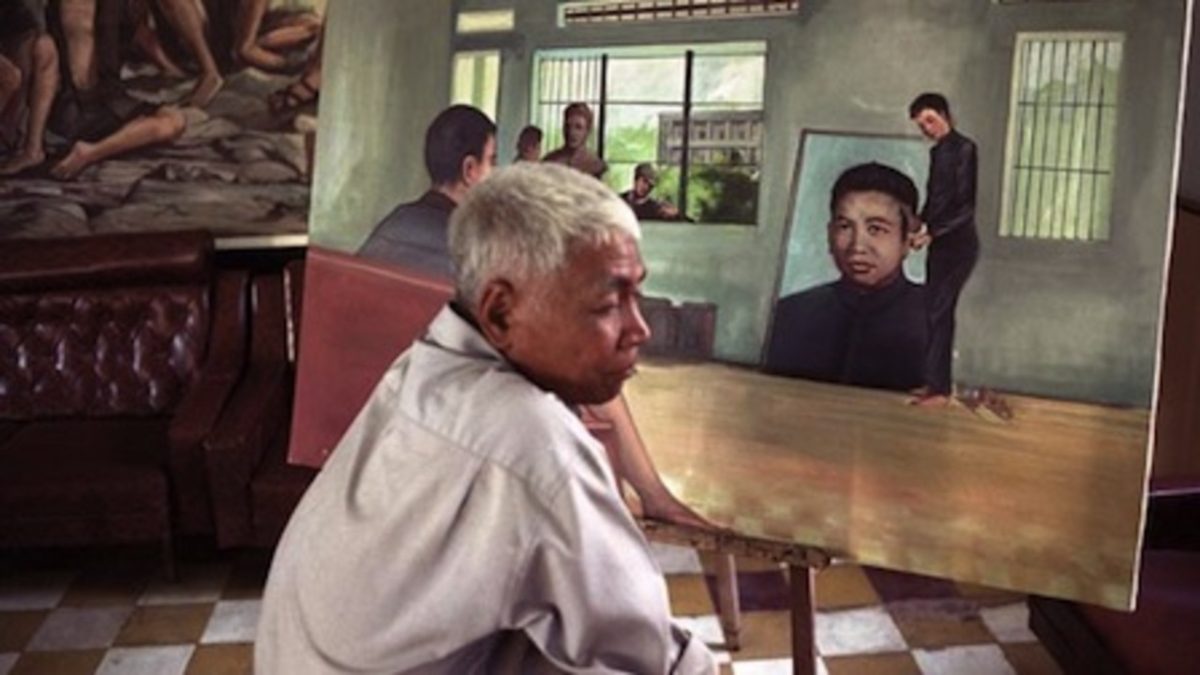
This is the final part of a three-part series about how the Holocaust has been depicted in cinema. You can read part one, about witness narratives, here, and part two, about the role of testimony, here.
In Yael Reuveny’s 2013 film Farewell, Herr Schwarz, the director tries to piece together remnants of her great-uncle Feivush “Feiv’ke” Schwarz’s life. Reuveny, the grandchild of Holocaust survivors, wants to understand why Feiv’ke abandoned Judaism after surviving the camps, living the rest of his life in East Germany without ever reuniting with his remaining family. The film explores the echoes of the Holocaust through generations, and how this monumental event continues to impact questions of identity, self, and the Jewish diaspora. It’s part of an emerging breed of Holocaust films. Since the people with firsthand experience of this history are by this point dwindling in numbers, these new films deal with further representation questions, the importance of keeping memory alive, and the nature of intergenerational trauma. By now, the “Holocaust film” has become such an entrenched sub-genre that it’s also informed the ways that other kinds of violence and historical genocides are depicted in cinema.
Films like Farewell, Herr Schwarz and The Flat (2011) showcase the Holocaust’s long-term impact on survivors, their descendants, and the societies they live in. As Shoah demonstrated through its construction, this is no past event, but an active agent in intergenerational relations and broader cultural trends. These films use memory to fight the conditions that allowed the Holocaust to happen in the first place. A recurring question is what we owe to the past. In these films, trauma pulls its interlocutors toward things that happened many years before they were born. They suggest how easily events and people are lost to time, and that remembrance needs to be active rather than passive, requiring engagement with the past, present, and future.
In The Emancipated Spectator, philosopher Jacques Rancière discusses Shoah and offers examples of other films and works of art that engage with what he calls “intolerable images” — images that cannot be experienced without “pain and indignation.” They are also suspect for a variety of reasons, but notably one of context and spectacle. How can intolerable images persuade or showcase specific conditions of violence rather than “the madness of human beings in general,” since the latter perspective inspires apathy rather than action? Rancière posits that the only acceptable witness does not want to witness, and that creating and seeing such images, whether real or constructed, suggests a desire to see what should be intolerable. Films like Shoah get around this by “oppos[ing] the voice of the image with the lie of the image.”
Another film Rancière cites to illustrate this concept is S-21: The Khmer Rouge Killing Machine (2003). Director Rithy Panh takes a similar approach to Lanzmann by “representing the machine rather than the victims.” What he does differently, though, is use the archive and recreation as a means of illustrating the specificity of this genocide. It is necessary, he argues, “to treat these archives as part of the system.” Rather than present them without comment, the materials are shown to survivors and guards, who are asked to react to them. We thus see both how the killing machine operated and how those involved feel about them in the present.

Panh discusses the importance of memory in his work as a means of engagement, saying, “Memory must remain a reference point. What I’m looking for is comprehension; I want to understand the nature of the crime, not to establish a cult of memory.” Panh also writes in his book The Elimination: “I infinitely admire the documentary work of Claude Lanzmann, which is based on speech and the organization of speech. The genius of his Shoah is that it lets the viewer see through words. But I believe that speech can be awakened, amplified, supported by such documents as have managed to escape destruction.”
As these films represent radical and philosophical engagements with memory and genocide, the true legacy of Holocaust films has a less noble history. In many ways, works like Shoah and S-21 stand in opposition to how mainstream films sanitize genocide into palatable entertainment. A film like Schindler’s List, which embraces classic Hollywood filmmaking, ultimately lacks the perspective to shed light on the totality of genocide in spite of its depiction of horrific violence. It boxes the complexity of human behavior into preestablished conventions, which serves to sanitize the Holocaust itself. While certain aesthetic markers attempt to cast aside sensationalism, they nonetheless feed into audience curiosity without necessarily challenging them. They keep the viewer at arm’s length, allowing them to be observers who can opt out, or conversely to pore over the most scandalous details of people’s lives and deaths without guilt. It’s essential to consider exactly what kinds of questions these films ask of their subjects and the audience.

There are, of course, many other films and filmmakers that engage with questions of genocide without falling for these pitfalls. Atom Egoyan’s Family Viewing (1987) and Ararat (2002) touch directly and indirectly on the Armenian Genocide as they challenge and explore our need to construct screen memories, especially as they relate to trauma and violence. As with Farewell, Herr Schwarz, they explore memory tied to genocide to explore more expansive ideas related to identity and space.
The very concept of memory becomes an important force both within Holocaust films specifically and more generally within movies that depict genocide. How exactly do we remember, and in what ways do we assure that “Never again” applies in a broader sense to combat contemporary genocides and the conditions that lead to them? In what ways can art not only educate but also challenge audiences to consider and reconsider their relationship and culpability to death? Why does it so often seem that some genocides are worth considering in mainstream film and others are not?
0 Commentaires